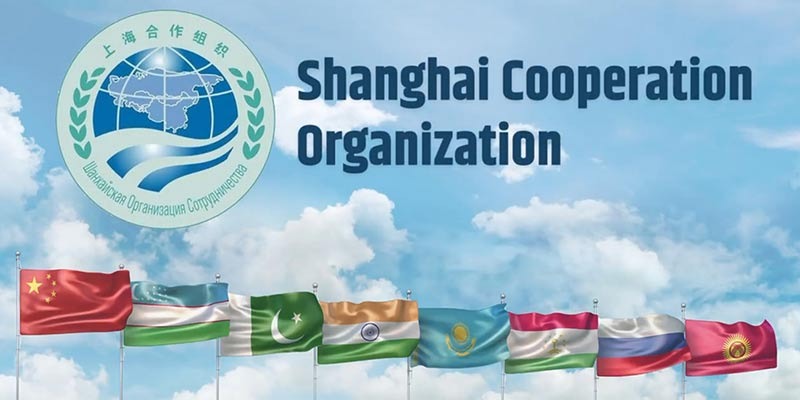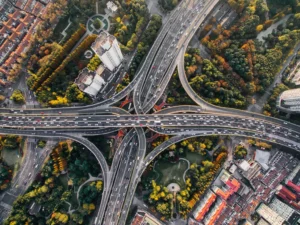SCO Promoting Economic Integration and Development in Eurasia

The Shanghai Cooperation Organization (SCO) is a key player in the Greater Eurasian micro-region, fostering comprehensive multilateral collaboration and maintaining regional security. With eight members, the SCO is a vital component of the Eurasian continent, based on common papers and vital necessity for regional engagement. The SCO, a transcontinental organization spanning from China to Russia, is crucial for preserving strategic stability on a global scale. It unites India, China, Russia, and Pakistan, half of the world’s nuclear club, transferring sovereign prerogatives to supranational bureaucratic entities. Expectations are high that the SCO will play a more active role and yield measurable outcomes at a time when the globe is going through significant changes and the global economy is experiencing more volatility and uncertainty. The SCO’s initial conception was based on three main pillars: political and security collaboration, economic and trade cooperation, and the growth of cultural and humanitarian relationships. The development and prosperity of the peoples residing on its territory is the SCO’s ultimate objective. The SCO member nations, with a significant market, mineral resources, and industrial base, have established strong economic relations due to ratified international agreements.
There are 122 economic-related documents in the SCO legal framework. In the areas of trade, banking, financial and investment operations, manufacturing, agriculture, transportation, telecommunications, customs, and tourism development, these promote communication between the parties. Several international agreements and approved program documents on banking and financial activities, as well as the growth of business, agriculture, and tourism, have also been inked by the SCO member states. To finance project activities, the organization is also thinking about establishing a Special Account and a SCO Development Bank. Working together as the “Big Eurasian Eight” for the past year has demonstrated the organization’s ability to adapt to shifting circumstances, new advancements, and objective demands. It is evident that in recent years, the SCO has been extending the economic scope of its operations. This trend was reaffirmed at the Qingdao summit. The organization is actively fostering collaboration in the areas of infrastructure, agriculture, customs services, trade and investment, and transportation. The SCO, comprising one-fourth of the world’s GDP, experienced a 4.84% GDP increase in 2024. Its member countries are building up $4 trillion USD in foreign exchange and gold reserves.
Additionally, the tourism industry is being intensively developed by the SCO. Owing to the gradual change in its economic structure, the Eurasian continent is emerging as the model for processes that merge sub-regional integration initiatives to create a regional “integration of integrations” that is largely centred on the interests of the Greater Eurasia countries. These processes are now becoming entangled; each component often occurs at the same time or in tandem. A unified, harmonious, and integrated system is a future objective, requiring broad-based political agreement and political will. It goes beyond forming new connections and demands changes in Eurasia’s political and economic climate.
The goal of the Silk Road Economic Belt (SREB) is to establish a transcontinental transportation corridor and a single Eurasian economic and commercial area. Strengthening regional economic integration, creating a common trans-Asian transportation infrastructure, removing trade and investment barriers, enhancing the role of national currencies, and expanding humanitarian cooperation are the five primary goals of the SREB. Over the SREB’s anticipated 30-year implementation period, 67 states, or 63% of the world’s population, might take part.
The SCO prioritizes establishing a network of free trade agreements with external parties to integrate EAEU states into global production chains, boost competitiveness, secure market access, grow exports, and attract investments. According to the traditional integration scenario, economic integration will progress gradually from its most basic form—a free trade area (FTA)—to its most advanced form—a common market. Experts from the World Trade Organization have noted a contemporary tendency toward a rise in regional trade agreements, which have increased by 60% in the last five to eight years. Both normal free trade agreements and the so-called “FTA+” format, or supplemental economic integration agreements, are covered under these agreements. The first decade of the twenty-first century saw a fivefold growth in the number of such FTA+ agreements. A free trade area is a type of economic integration when nations agree to lift trade barriers between themselves. Though they individually impose customs taxes on trade with third countries, those states freely interchange products and Surfaces.
Conclusion
The historic Eurasian region is experiencing transformational processes, with a growing trend towards a regional economic system. This is driven by Asia’s growing global economic role and the strengthening of centripetal trends. This will be further strengthened by overlapping participation in trade agreements, integration initiatives, and increased involvement with Southeast Asian nations. As the form and mechanism of cooperation evolve and improve within the frameworks of both the SCO and EAEU, the institutional foundation required for this will progressively grow, ultimately leading to a deeper level of involvement with Southeast Asian nations.


